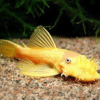To provide the best experiences, we use technologies like cookies to store and/or access device information. Consenting to these technologies will allow us to process data such as browsing behaviour or unique IDs on this site. Not consenting or withdrawing consent, may adversely affect certain features and functions.
The technical storage or access is strictly necessary for the legitimate purpose of enabling the use of a specific service explicitly requested by the subscriber or user, or for the sole purpose of carrying out the transmission of a communication over an electronic communications network.
The technical storage or access is necessary for the legitimate purpose of storing preferences that are not requested by the subscriber or user.
The technical storage or access that is used exclusively for statistical purposes.
The technical storage or access that is used exclusively for anonymous statistical purposes. Without a subpoena, voluntary compliance on the part of your Internet Service Provider, or additional records from a third party, information stored or retrieved for this purpose alone cannot usually be used to identify you.
The technical storage or access is required to create user profiles to send advertising, or to track the user on a website or across several websites for similar marketing purposes.




















Emily Carter (verified owner) –
I recently added a group of Peppered Corys (Corydoras Paleatus) to my community tank, and I couldn’t be more thrilled with how they are thriving! These little guys are not only incredibly charming with their mottled patterns, but they also exhibit delightful behaviors as they scurry around the substrate, efficiently sifting through the sand for food. I’ve had them for about two months now, and they’ve adapted beautifully, actively engaging with the environment and each other.
I particularly appreciate their peaceful nature, making them perfect companions for my other freshwater fish. In comparison to other corydoras I’ve kept, these Peppered Corys are much more outgoing and social, which adds life to my aquarium. They seem to really enjoy the planted areas and often hide in the leaves, which is a joy to watch.
One minor concern is that they do require a soft substrate to avoid injuries, so be mindful of that if you’re setting up a tank. Overall, I highly recommend these tropical fish to anyone looking to enhance their aquarium experience! Great for both beginners and seasoned aquarists alike. Plus, they arrived healthy and active, thanks to the careful shipping. Can’t wait to watch them grow more!
Emily Carter (verified owner) –
I recently added a group of Peppered Corys (Corydoras Paleatus) to my community tank, and I couldn’t be happier! These delightful freshwater fish have brought so much life to my aquarium. After about two months, they settled in beautifully, exploring every nook and cranny. Their playful nature is a joy to watch, especially when they scavenge for food or dart around with their fellow tank mates. I love how they’re an ideal choice for both beginners and seasoned aquarists; they’re not only easy to care for but also incredibly social, thriving in groups. Compared to other catfish species I’ve kept, these Corys are more engaging and less shy, always eager to interact. One minor concern I encountered was ensuring they had enough hiding spots in the substrate, as they love to burrow. But overall, these little guys are the perfect addition to any community tank. I highly recommend them to anyone looking to enhance their aquarium with charming, active companions!